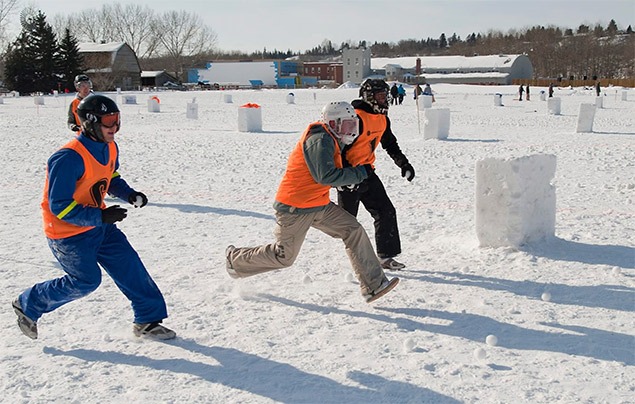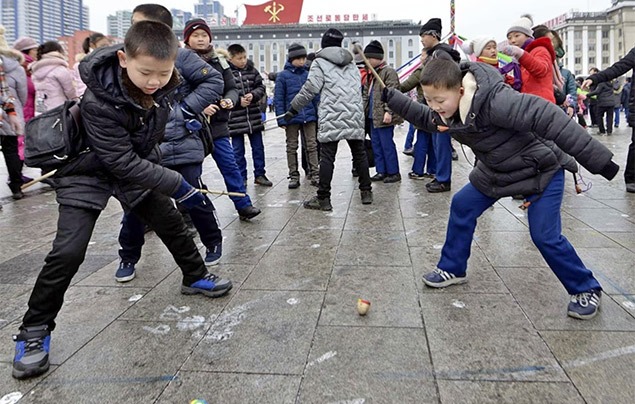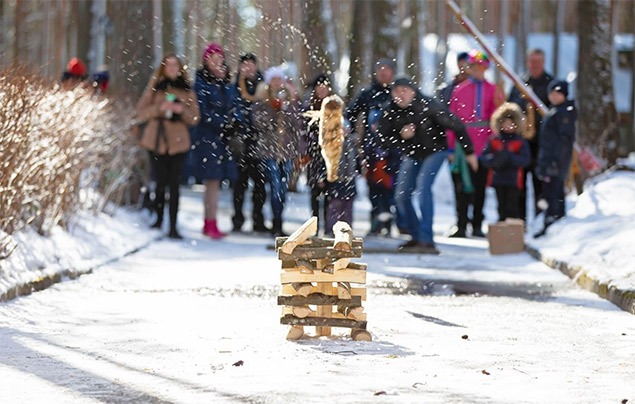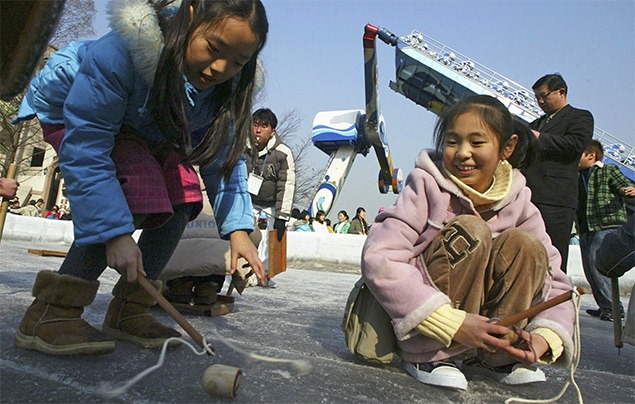10 winter games for kids from around the world
These cool games will get children outside - and might just introduce them to new cultures, too!
These winter games for kids originate from all over the globe, but some might actually sound familiar. Many are slightly different versions of things your children probably already know!
By introducing play from other cultures, you’ll help spark your child’s curiosity about the world—and maybe increase their empathy toward other people. Plus, these outdoor activities can go a long way in busting winter boredom. Wins all around!
1. Lǎoyīng zhuō xiǎo jī (China)
The name of this traditional game from China roughly translates to “eagle catches chicks”. It’s based on a folktale about how two animals became mortal enemies – but luckily, the game is far less intense.
All the players except the “eagle” hold onto the shoulder or waist of the person in front of them. The kid at the front is the “mother hen,” and everyone behind them is a “chick.”
The goal is for the eagle to “catch” one of the chicks while the mother hen tries to protect them. The chicks need to steer clear — all while making sure they don’t break the line. Hilarity ensues.
If a chick gets caught, they have to hold on to the eagle and help catch the other baby birds.
2. Gorodki (Russia)
Gorodki (which loosely translates to “little cities”) may have been invented by 18th century Russian farmers. Since then, it’s been played by everyone from Leo Tolstoy to Vladimir Putin.
To play, arrange wooden cylinders in a stack to create one of 15 shapes (the villages) inside a marked square (the city). Then a player throws a heavy stick at the tower to knock villages out of the city square. Their aim is to do it in as few throws as possible — almost like a cross between bowling and hoopla.
Have kids try this by building a tower out of sticks and branches, then using a bigger limb or even a small ball to knock them out.
Learning about games from other cultures is a great way to get your family talking about people around the world, and why it’s important to appreciate the way they do things, too. Open their eyes to new events, traditions and activities every month with a subscription to National Geographic Kids magazine.
3. Sliding game (Canada)
This traditional Indigenous game was played by Cree women, who lived in what is now Canada. To play, they carved holes in a slanted piece of ice and labelled each with a different point value. Then, they flicked pieces of buffalo horn into each hole with their fingers.
Recreate the game by scooping out holes in snow or soil. Agree on point values, then use small rocks or beanbags to score points. How many can your kids get?!
4. Stiv heks (Norway)
This twist on tag adds a few rules. Translated to “stiff witch,” the game designates one child as the “witch,” who must freeze the other players by tagging them. Players only becomes unfrozen when another child crawls through their legs. The witch wins once all the kids are “frozen.”
5. Paengi chigi (South Korea)
This folk game, which loosely translates to “spinning top,” is like the original Beyblades — on ice. To play, kids attach a long piece of string to a stick on one end, and a wooden top on the other. Then, they place the top on a patch of ice, and whip the stick to keep the top spinning as long as possible.
Help your kids craft their own spinning top, or simply provide each child with an item that will rotate on icy puddles (like a coin or lip balm tube) and count the spins. The top that spins the longest wins.
6. Kot i mysz (Poland)
This game, which translates to “cat and mouse,” will get heart rates pumping! Here, a “cat” is on the outside of a circle of kids holding hands, and a “mouse” is on the inside. To win, the mouse must escape the circle without being caught by the cat.
The ring of children can raise and lower their arms to help the mouse escape and keep the cat outside.
If the mouse is caught, it becomes the new cat. Then the original cat joins the circle, and a new child becomes the mouse.
Played on playgrounds across Eastern Europe, this game is often accompanied by a nursery rhyme song about, well, a cat and a mouse. If the group is large, two cats and two mice can play at once.
7. Thunka (Bolivia)
In this game played in Andean Bolivia, kids draw seven squares on the ground. Each represents a day of the week.
The first player aims a stone on the square for the first day of the week. If they’re successful, they hop into the square on one foot. The second player tosses towards the second day of the week.
If that child is successful, the first kid throws their stone to the third day of the week and hops there—without hopping on the square in between. The first player to hop out of the seventh square wins.
Boys and girls traditionally play the game differently. And sometimes players add extra squares, different themes, hopping rules or objects, too. So, encourage your kids to try some ideas of their own!
8. Yukigassen (Japan)
Your kids probably enjoy a good old-fashioned snowball fight, so they might be interested to know that snowball fighting is a competitive sport in Japan. There, the game comes with teams, special playing fields, and rules (like how many snowballs each team gets).

Translated from the Japanese words yuki, meaning “snow,” and gassen, meaning “battle,” to win the game you must tag other players with your snowball (if you get hit, you’re out) while attempting to capture the other team’s flag. The first team to get all the other players out or grab the flag wins.
The official game has teams of seven, but your version can simply divide your group equally. You could also agree on your own set of rules, like no hits above the neck.
9. Ketju (Finland)
Call this one “Un-Twister.” Translated to “chain,” this game has all the kids but one join hands in a line, then weave their arms and legs until they’re completely tangled. The child not included should cover their eyes while this happens, then uncover them and try to untangle the circle.
10. Feuer, wasser, sturm, blitz (Germany)
Almost like Simon Says, players in this game must freeze into whatever weather is called out. (The name translates to “fire, water, storm, lightning.”)
If it’s fire, you lay flat; storm, hold on to something solid so you aren’t blown away; water, get your feet off the ground; lightning, get as small as you can to avoid being struck! The last to react or hold the wrong position is out.
For extra fun, have your kids expand the game with their imaginations. Snow could mean freezing like a statue, or rain might be holding your hands over your head like an umbrella. What new rules can your family come up with?!















LEAVE A COMMENT
THANK YOU
Your comment will be checked and approved shortly.
WELL DONE,
YOUR COMMENT
HAS BEEN ADDED!
COMMENTS
CUSTOMIZE YOUR AVATAR